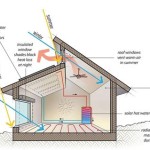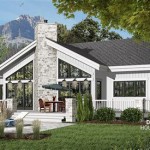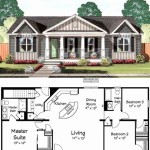Hurricane Resistant House Plans are architectural designs specifically engineered to withstand the destructive forces of hurricanes. These plans incorporate a range of construction techniques and materials that enhance a home’s resilience against high winds, heavy rains, and storm surges. For instance, homes built with hurricane-resistant designs may feature reinforced walls, impact-resistant windows, and elevated foundations to mitigate the potential for structural damage during hurricane events.
The rising frequency and intensity of hurricanes in recent years have made hurricane-resistant house plans increasingly crucial for safeguarding coastal communities. By adopting these plans, homeowners can proactively protect their properties and families from the devastating impacts of these storms.
In the following sections, we will delve into the key elements of hurricane-resistant house plans, exploring the construction techniques, materials, and design principles that contribute to their resilience.
Hurricane-resistant house plans incorporate several key elements to enhance a home’s resilience against hurricane forces:
- Reinforced concrete walls
- Impact-resistant windows and doors
- Elevated foundations
- Hip roofs
- Metal hurricane shutters
- Hurricane straps and bolts
- Water-resistant materials
- Generator hookups
By incorporating these elements into their designs, hurricane-resistant house plans provide homeowners with greater peace of mind and protection against the destructive impacts of hurricanes.
Reinforced concrete walls
Reinforced concrete walls are a crucial element in hurricane-resistant house plans due to their exceptional strength and durability. Concrete is a composite material consisting of cement, sand, gravel, and water. When reinforced with steel rebar, concrete walls become highly resistant to bending, cracking, and shattering.
- Resistance to high winds: Reinforced concrete walls can withstand the intense wind loads generated by hurricanes. The interlocking structure of concrete and steel rebar prevents the walls from buckling or collapsing under high-pressure winds.
- Protection against wind-borne debris: Hurricanes often carry flying debris such as roofing materials, tree branches, and even small projectiles. Reinforced concrete walls provide a solid barrier against these objects, preventing them from penetrating the home’s interior and causing damage.
- Flood resistance: In areas prone to storm surges and flooding, reinforced concrete walls act as a barrier against water intrusion. Concrete is a water-resistant material, and when properly sealed, it can prevent floodwaters from seeping into the home.
- Durability: Reinforced concrete walls are highly durable and can withstand the test of time. They are resistant to moisture, rot, and insects, ensuring the home’s structural integrity for many years to come.
Overall, reinforced concrete walls play a vital role in hurricane-resistant house plans by providing exceptional strength, durability, and protection against the destructive forces of hurricanes.
Impact-resistant windows and doors
Impact-resistant windows and doors are essential components of hurricane-resistant house plans, providing protection against the high winds and wind-borne debris that accompany hurricanes.
Protection against wind-borne debris: Hurricanes often produce strong winds that can hurl debris such as roofing materials, tree branches, and even small projectiles at high speeds. Impact-resistant windows and doors are designed to withstand the impact of these objects, preventing them from shattering and creating openings for wind and rain to enter the home.
Resistance to wind pressure: Impact-resistant windows and doors are also designed to resist the high wind pressures generated by hurricanes. They are typically made of laminated glass or polycarbonate, which are strong and flexible materials that can withstand the force of strong winds without breaking.
Energy efficiency: In addition to their protective benefits, impact-resistant windows and doors can also contribute to a home’s energy efficiency. They are often equipped with double or triple glazing, which helps to insulate the home and reduce energy consumption.
Overall, impact-resistant windows and doors are a vital part of hurricane-resistant house plans, providing protection against wind-borne debris, wind pressure, and other hurricane-related hazards.
Elevated foundations
Elevated foundations are a critical aspect of hurricane-resistant house plans, designed to protect homes from storm surges and flooding.
Protection against storm surges: Storm surges are walls of water that can accompany hurricanes, reaching heights of several meters. Elevated foundations raise the home above the expected storm surge level, preventing floodwaters from entering the living space.
Reduced risk of flooding: In areas prone to flooding, elevated foundations can help to keep the home dry even during heavy rainfall. By raising the home above the ground level, floodwaters are less likely to reach the foundation and seep into the home.
Protection of utilities: Elevated foundations can also protect the home’s utilities, such as electrical wiring and HVAC systems, from floodwaters. These utilities are often located in the basement or crawlspace, which are more vulnerable to flooding. By elevating the home, these utilities are less likely to be damaged by floodwaters.
Improved structural stability: Elevated foundations provide a more stable base for the home, reducing the risk of structural damage during hurricanes. The higher elevation helps to distribute the weight of the home more evenly, preventing the foundation from shifting or settling.
Overall, elevated foundations are an essential component of hurricane-resistant house plans, providing protection against storm surges, flooding, and other hurricane-related hazards.
Hip roofs
Hip roofs are a type of roof with sloping sides that meet at a ridge at the top of the roof. They are commonly used in hurricane-resistant house plans due to their inherent strength and stability.
- Resistance to high winds: Hip roofs are designed to withstand high winds and uplift forces. The sloping sides of the roof deflect wind forces upward and away from the home, reducing the risk of roof damage or collapse.
- Protection against wind-driven rain: Hip roofs also provide good protection against wind-driven rain. The sloping sides of the roof prevent rain from pooling on the roof, reducing the risk of water and leaks.
- Reduced risk of debris accumulation: The sloping sides of hip roofs make it less likely for debris to accumulate on the roof. This is important in hurricane-prone areas, where wind-borne debris can pose a significant hazard.
- Improved structural stability: Hip roofs are structurally more stable than other types of roofs, such as gable roofs. The sloping sides of the roof provide additional support, reducing the risk of roof collapse during hurricanes.
Overall, hip roofs are an excellent choice for hurricane-resistant house plans, providing superior protection against high winds, wind-driven rain, and wind-borne debris.
Metal hurricane shutters
Metal hurricane shutters are an effective and durable protection system for windows and doors in hurricane-prone areas. They are typically made of aluminum or steel and are designed to withstand the high winds and wind-borne debris that accompany hurricanes.
Protection against wind-borne debris: Metal hurricane shutters provide a solid barrier against wind-borne debris, such as roofing materials, tree branches, and small projectiles. They are designed to resist the impact of these objects, preventing them from shattering windows or doors and causing damage to the home’s interior.
Resistance to high winds: Metal hurricane shutters are also designed to resist the high wind pressures generated by hurricanes. They are typically attached to the home’s exterior walls with strong bolts or screws, ensuring they remain securely in place even during strong winds.
Reduced risk of flooding: In areas prone to storm surges and flooding, metal hurricane shutters can help to prevent floodwaters from entering the home through windows and doors. When properly installed, they can create a watertight seal, preventing water from seeping into the home.
Hurricane straps and bolts
Hurricane straps and bolts are essential components of hurricane-resistant house plans, designed to strengthen the connection between the home’s roof and walls, and between the walls and foundation. They play a crucial role in preventing structural failure during hurricane-force winds.
Roof-to-wall straps: Roof-to-wall straps are metal connectors that are installed to secure the roof trusses to the top of the exterior walls. They are typically made of galvanized steel and are designed to resist uplift forces that can cause the roof to separate from the walls during high winds.
Wall-to-foundation bolts: Wall-to-foundation bolts are used to anchor the home’s walls to the foundation. They are typically made of high-strength steel and are installed through the bottom plate of the walls and into the foundation. These bolts help to prevent the walls from shifting or collapsing during hurricane-force winds.
Importance of proper installation: It is crucial that hurricane straps and bolts are properly installed according to the manufacturer’s specifications and local building codes. Improper installation can compromise the effectiveness of these components and increase the risk of structural damage during a hurricane.
Water-resistant materials
Water-resistant materials play a crucial role in hurricane-resistant house plans by protecting the home from water damage caused by heavy rains, storm surges, and flooding. These materials are used in various components of the home, including the roof, walls, windows, and doors.
Water-resistant roofing materials: Water-resistant roofing materials, such as asphalt shingles with a water-resistant sealant, metal roofing, and tile roofing, are used to protect the roof from water penetration. These materials are designed to shed water effectively and prevent leaks, which can lead to structural damage and mold growth.
Water-resistant wall materials: Water-resistant wall materials, such as fiber cement siding, vinyl siding, and stucco, are used to protect the exterior walls from water damage. These materials are designed to resist moisture absorption and prevent water from seeping into the walls, which can cause rot, mold, and structural problems.
Water-resistant windows and doors: Water-resistant windows and doors are essential for preventing water intrusion during hurricanes. These windows and doors are typically made with durable frames and impact-resistant glass that can withstand strong winds and wind-borne debris. They are also equipped with weatherstripping and seals to prevent water from seeping through the cracks.
Overall, the use of water-resistant materials in hurricane-resistant house plans is critical for protecting the home from water damage and ensuring the safety and well-being of its occupants.
Generator hookups
Generator hookups are an essential component of hurricane-resistant house plans, providing a reliable source of power in the event of a power outage caused by a hurricane. These hookups allow homeowners to connect a portable generator to the home’s electrical system, ensuring the continued operation of essential appliances, lights, and other electrical devices.
Benefits of generator hookups: Generator hookups offer several key benefits during a hurricane or other power outage:
- Power for essential appliances: Generator hookups allow homeowners to power essential appliances, such as refrigerators, freezers, and medical equipment, which are crucial for maintaining health and safety during an emergency.
- Lighting and communication: Generator hookups provide power for lighting, enabling homeowners to navigate their homes safely and stay informed through radios and televisions.
- Comfort and convenience: Generator hookups can power air conditioners, fans, and other appliances, providing comfort and convenience during a power outage.
- Reduced risk of damage: Generator hookups can help prevent damage to food and other perishable items by keeping refrigerators and freezers running during a power outage.
Types of generator hookups: There are two main types of generator hookups:
- Manual transfer switch: A manual transfer switch allows homeowners to manually connect the generator to the home’s electrical system. This type of hookup requires the homeowner to be present to operate the switch during a power outage.
- Automatic transfer switch: An automatic transfer switch automatically detects a power outage and seamlessly connects the generator to the home’s electrical system. This type of hookup provides greater convenience and peace of mind, as it does not require manual intervention.
Installation considerations: Installing a generator hookup requires careful planning and professional expertise. The hookup should be installed by a qualified electrician to ensure proper operation and safety. It is also important to follow the manufacturer’s instructions and local building codes to ensure compliance and optimal performance.










Related Posts








